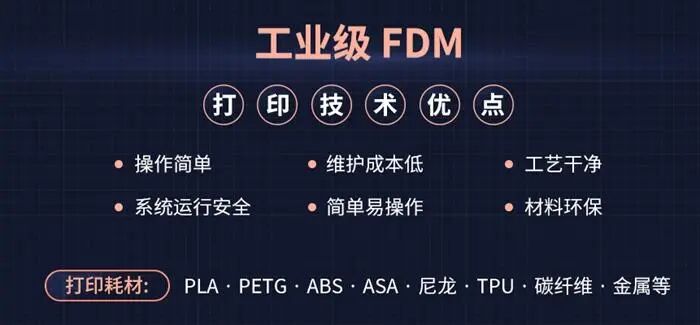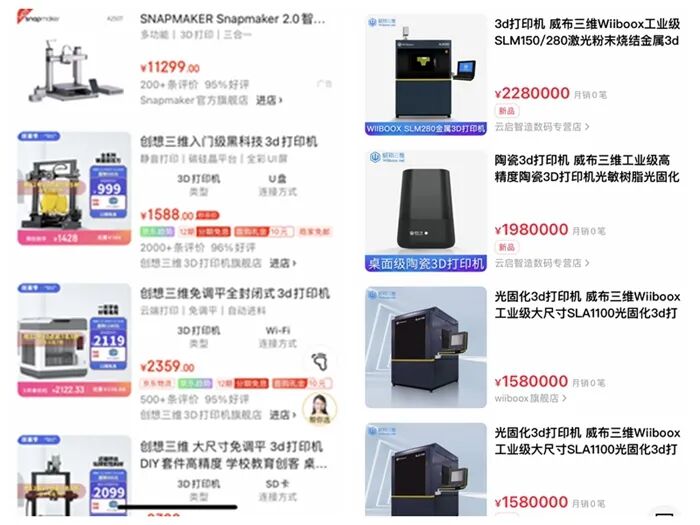 A digital blogger once explained that engaging with 3D printing requires a certain level of programming or modeling expertise.
A digital blogger once explained that engaging with 3D printing requires a certain level of programming or modeling expertise. According to Japanese media reports, the gun used by the shooter of former Prime Minister Shinzo Abe may have been 3D printed, although creating ammunition is relatively difficult and its source remains a mystery. On the day of the incident, the search popularity of terms like “3D printing” surged in Japan. Can 3D printing really produce firearms?
According to Japanese media reports, the gun used by the shooter of former Prime Minister Shinzo Abe may have been 3D printed, although creating ammunition is relatively difficult and its source remains a mystery. On the day of the incident, the search popularity of terms like “3D printing” surged in Japan. Can 3D printing really produce firearms?
The Wide Applications of 3D Printing
It is understood that 3D printing is a technology that constructs objects based on digital model files, using powdery metals or plastics and other adhesive materials, through a layer-by-layer printing method. Industrial-grade 3D printing can use a variety of materials, including metals. A screenshot from a certain 3D printing manufacturer is shown. Unlike processes such as carving and cutting, 3D printing creates physical products that are consistent with the digital model design through a layer-by-layer accumulation method. Compared to traditional manufacturing techniques, 3D printing can reduce complex process flows and manufacture objects with special shapes or complex internal structures. Currently, 3D printing technology is mainly applied in education, healthcare, automotive, aerospace, and industrial fields.With the development of 3D printing technology, its applications are becoming increasingly widespread. Media reports indicate that 3D printing can even produce food and human organs. Recently, Nanjing Sanjieji Pharmaceutical Technology Co., Ltd. announced on its official website that its first 3D printed drug product, T19, has received approval for clinical trials (IND) from the National Medical Products Administration. The principle of this 3D printed drug is: directly processing powdered raw materials into softened or melted semi-solid forms, then precisely extruding and layer-by-layer printing to form a pre-designed three-dimensional structure of the drug formulation. In the consumer sector, users have showcased 3D printed shoes, car models, badminton rackets, small fans, and more, with a wide variety of printed items, primarily used for printing figurines and collectibles. A report released by the consulting research institution Zhongyan Puhua shows that the global 3D printing market size was approximately $15.4 billion in 2020, with China’s 3D printing market size around $4.4 billion, and it is expected to reach $34.9 billion by 2023. This raises the question: can everything be 3D printed? Can firearms also be 3D printed? According to a report from CCTV News on June 15, an 18-year-old man in Australia was charged for 3D printing a complete gun at home, which could fire 15 rounds continuously with a single trigger pull. Police stated that it took only two days to create this 3D printed gun, with material costs under 40 Australian dollars (approximately $28).
Industrial-grade 3D printing can use a variety of materials, including metals. A screenshot from a certain 3D printing manufacturer is shown. Unlike processes such as carving and cutting, 3D printing creates physical products that are consistent with the digital model design through a layer-by-layer accumulation method. Compared to traditional manufacturing techniques, 3D printing can reduce complex process flows and manufacture objects with special shapes or complex internal structures. Currently, 3D printing technology is mainly applied in education, healthcare, automotive, aerospace, and industrial fields.With the development of 3D printing technology, its applications are becoming increasingly widespread. Media reports indicate that 3D printing can even produce food and human organs. Recently, Nanjing Sanjieji Pharmaceutical Technology Co., Ltd. announced on its official website that its first 3D printed drug product, T19, has received approval for clinical trials (IND) from the National Medical Products Administration. The principle of this 3D printed drug is: directly processing powdered raw materials into softened or melted semi-solid forms, then precisely extruding and layer-by-layer printing to form a pre-designed three-dimensional structure of the drug formulation. In the consumer sector, users have showcased 3D printed shoes, car models, badminton rackets, small fans, and more, with a wide variety of printed items, primarily used for printing figurines and collectibles. A report released by the consulting research institution Zhongyan Puhua shows that the global 3D printing market size was approximately $15.4 billion in 2020, with China’s 3D printing market size around $4.4 billion, and it is expected to reach $34.9 billion by 2023. This raises the question: can everything be 3D printed? Can firearms also be 3D printed? According to a report from CCTV News on June 15, an 18-year-old man in Australia was charged for 3D printing a complete gun at home, which could fire 15 rounds continuously with a single trigger pull. Police stated that it took only two days to create this 3D printed gun, with material costs under 40 Australian dollars (approximately $28).
Are there barriers to 3D printing?
In the industrial sector, due to limitations in printing materials and precision, the mainstream view is that 3D printing is not universally applicable, especially for products using composite materials, where 3D printing technology shows its limitations. Additionally, compared to traditional molding processes or assembly lines, 3D printing is less efficient for mass production due to its single-unit production nature, and is currently mostly applied in customized products. Furthermore, if high-precision 3D printing is required, costs will increase and printing efficiency will decrease. For consumer-grade 3D printing, not every consumer can easily engage with it. A digital blogger once explained that engaging with 3D printing requires a certain level of programming or modeling expertise, and the cost of high-precision printers is also a barrier. The prices of 3D printers sold on e-commerce platforms range from hundreds to millions of yuan. A screenshot shows this. Journalists from China News Finance observed that 3D printers are available from hundreds to millions of yuan on various e-commerce platforms. A professional 3D printer manufacturer stated that for 3D printers using metal as material, prices range from thousands to millions of yuan, depending on the intended use. The manufacturer also mentioned that printing requires establishing relevant 3D models and using specialized modeling software, which differs from programming as it mainly involves drawing. “We also have a model library, which can be considered a model marketplace; if you cannot model yourself, you can directly purchase the models you want.” “If you simply want a metallic feel without needing the actual properties of the metal, you can choose other materials, such as filaments that contain some metal powder, which can produce a texture similar to metal, but without the strength,” the manufacturer stated. Editor:Li NaEditor-in-Chief: Sun YueRECOMMENDRecommended Reading
The prices of 3D printers sold on e-commerce platforms range from hundreds to millions of yuan. A screenshot shows this. Journalists from China News Finance observed that 3D printers are available from hundreds to millions of yuan on various e-commerce platforms. A professional 3D printer manufacturer stated that for 3D printers using metal as material, prices range from thousands to millions of yuan, depending on the intended use. The manufacturer also mentioned that printing requires establishing relevant 3D models and using specialized modeling software, which differs from programming as it mainly involves drawing. “We also have a model library, which can be considered a model marketplace; if you cannot model yourself, you can directly purchase the models you want.” “If you simply want a metallic feel without needing the actual properties of the metal, you can choose other materials, such as filaments that contain some metal powder, which can produce a texture similar to metal, but without the strength,” the manufacturer stated. Editor:Li NaEditor-in-Chief: Sun YueRECOMMENDRecommended Reading
“Halfway” Abe

Positive cases discovered in this area, 2112 people in centralized quarantine

The president and prime minister of this country announced their resignations one after another, what’s going on?